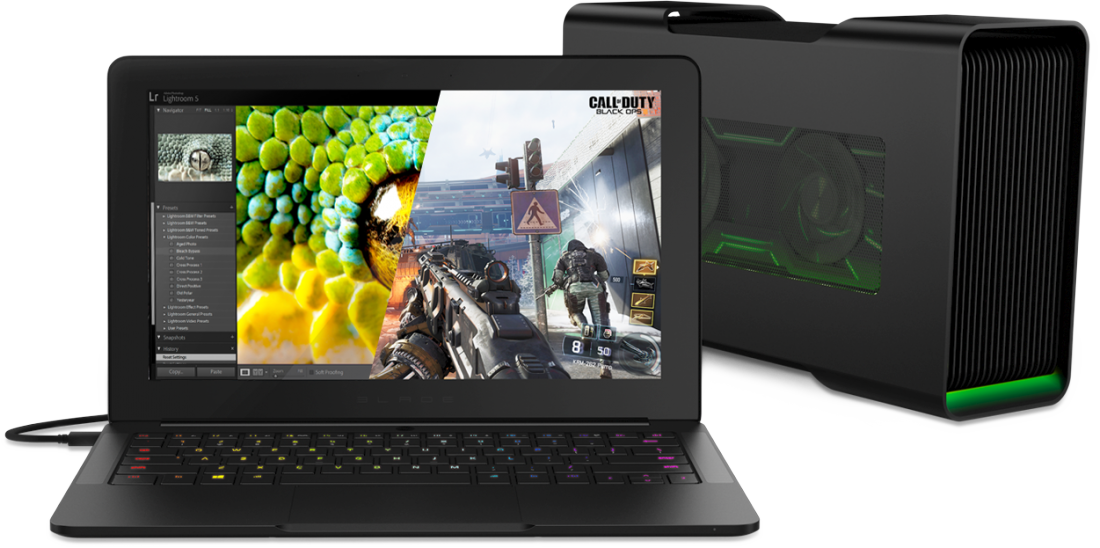
Razer's latest product, unveiled at CES 2016, is the company's first to follow a new trend in gaming laptops: the ability to place a desktop graphics card in a box and connect it to the system for extra gaming power.
The new laptop is called the Razer Blade Stealth, which can be connected to the Razer Core external GPU housing via Thunderbolt 3. This setup is pretty similar to Alienware's Graphics Amplifier that we reviewed last year, although the use of Thunderbolt 3 instead of a proprietary PCIe x4 cable gives the Razer Core more bandwidth and increased flexibility.
The Blade Stealth itself is a slim (13.2mm) and reasonably light (1.25 kg) 12.5-inch notebook, equipped with either a 2560 x 1440 or 3840 x 2160 IPS display. Internally you're not really seeing gaming laptop hardware – Razer has loaded this system with an Intel Core i7-6500U CPU, 8 GB of RAM and no discrete GPU – but the idea is that you connect it to the Core while gaming for a huge boost in performance.
The Core supports basically any dual-slot graphics card on the market, thanks to its 500W internal power supply. On the rear you'll also find four USB 3.0 ports and an Ethernet port, which makes the Core a decent hub for the Blade Stealth, especially considering the laptop can be powered over Thunderbolt 3 via the enclosure.
Razer won't be shipping the Core with a graphics card inside, and it's also not clear at this stage what the enclosure will cost, although it will ship in the first half of 2016. The Blade Stealth, on the other hand, will be available in February starting at $999 for the 1440p/128GB model, with the top end 2160p/512GB model going for $1599.
https://www.techspot.com/news/63382-razer-blade-stealth-laptop-external-graphics-card.html